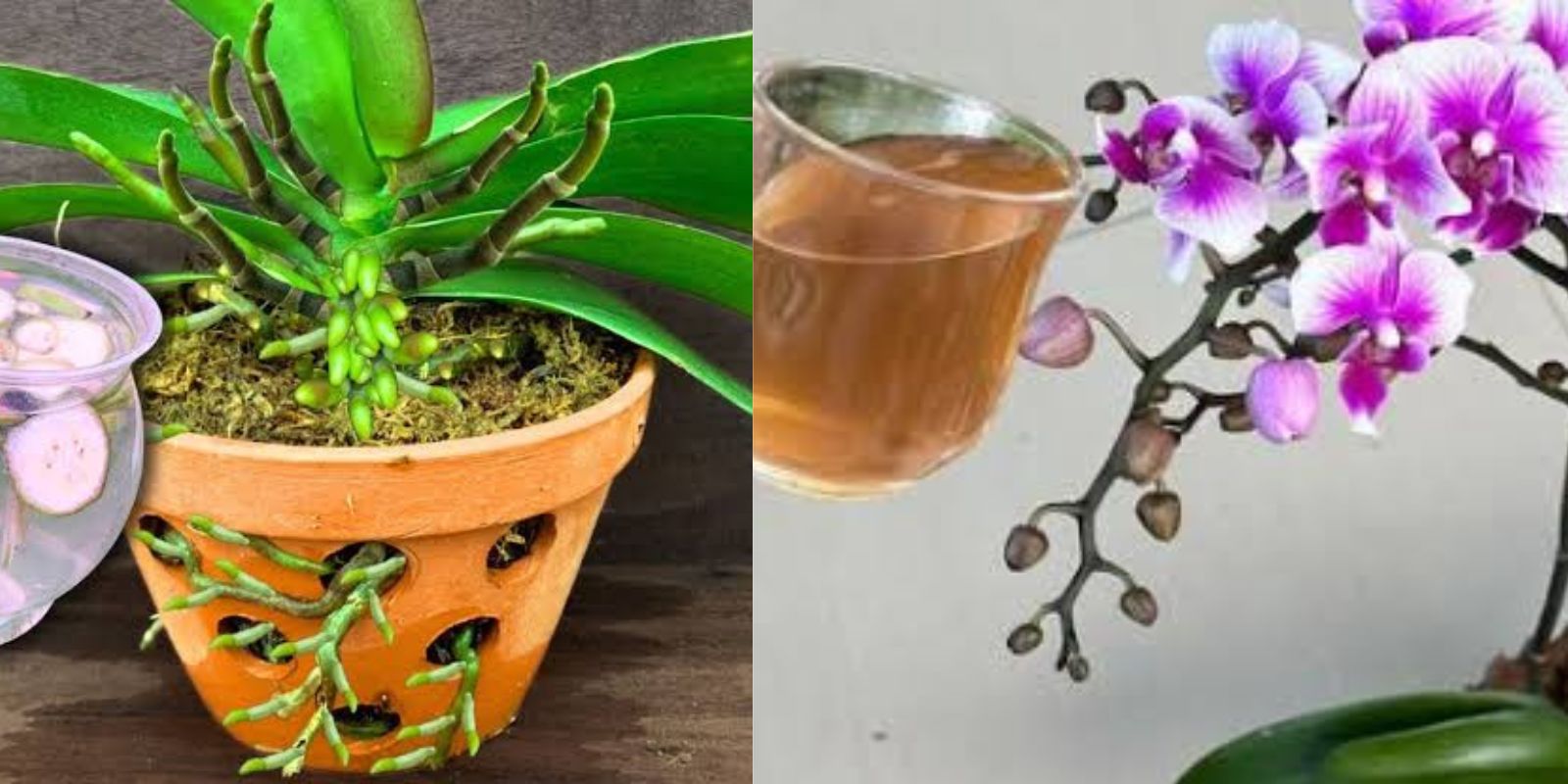Orchids, with their exotic beauty and delicate blooms, are a favorite among gardeners and plant enthusiasts. However, achieving those spectacular blossoms can sometimes feel like a mystery. What if the secret to thriving, blooming orchids lies in a simple switch in your watering routine? Instead of plain water, using a nutrient-rich solution can transform your orchid care game and reward you with breathtaking flowers. Let’s explore this transformative approach and how you can use it to maximize the potential of your orchids.
Why Orchids Need More Than Plain Water
Orchids are tropical plants that grow in environments rich in organic matter. In their natural habitat, rainwater mixed with decayed plant material provides nutrients vital for their growth. When we water orchids with plain water at home, they miss out on this natural nutrient boost, which can hinder their ability to produce abundant, vibrant blooms.
Using a specially crafted solution that mimics their natural environment can provide orchids with the nutrients they need to thrive. This small change can make a big difference, ensuring healthier plants and more frequent blooming cycles.
How to Prepare the Orchid Bloom Solution
Ingredients Needed
- Water: Use distilled or rainwater to avoid chemicals like chlorine and fluoride that can harm orchids.
- Diluted Organic Fertilizer: A balanced orchid fertilizer (20-20-20) is ideal.
- Epsom Salt: Provides magnesium, which enhances photosynthesis and strengthens blooms.
- Optional Additive: A teaspoon of molasses can be added to feed beneficial microbes and improve nutrient absorption.
Preparation Steps
- Take one liter of water and let it come to room temperature.
- Add a half teaspoon of diluted organic fertilizer to the water.
- Stir in a pinch of Epsom salt (about 1/8 teaspoon).
- Mix thoroughly until all ingredients are dissolved.
- For added benefits, include a teaspoon of molasses and stir well.
How to Water Orchids with the Bloom Solution
- Timing Matters
Water your orchids early in the morning. This mimics their natural environment and allows them to absorb nutrients before the day heats up. - Apply Directly to Roots
Slowly pour the solution over the orchid’s roots. Use enough to saturate the growing medium without letting the plant sit in water. - Drain Excess Water
Ensure your pot has good drainage. Any standing water can lead to root rot, which is detrimental to orchids. - Frequency
Use this solution once a week during the growing and blooming seasons. In dormant periods, reduce feeding to once a month.
Complementary Orchid Care Tips
1. Optimize Light Conditions
Orchids need bright, indirect sunlight to thrive. Place them near an east-facing window or use grow lights to provide consistent light. Too much direct sunlight can scorch the leaves, while too little light can prevent blooming.
2. Maintain Humidity Levels
Orchids thrive in humid environments. Use a pebble tray filled with water under your orchid pot or mist the plant regularly to increase humidity. A humidity level of 50-70% is ideal.
3. Monitor Temperature
Orchids prefer temperatures between 65-75°F (18-24°C). Avoid placing them near drafts or heating vents, as sudden temperature changes can stress the plant.
4. Prune and Repot as Needed
After blooms fade, prune the spent flower spikes to encourage new growth. Repot orchids every 1-2 years to refresh their growing medium and ensure healthy roots.
The Results: Spectacular Blooms
With this nutrient-rich solution and proper care, you’ll notice significant improvements in your orchid’s health and blooming cycle. The leaves will appear greener and more vibrant, the roots will grow stronger, and the blooms will be more frequent, larger, and longer-lasting.
Common Mistakes to Avoid
- Overwatering
Overwatering is the most common cause of orchid problems. Always allow the growing medium to dry slightly between waterings. - Using Tap Water
The chemicals in tap water can build up in the soil and harm orchids. Always use distilled or rainwater for the best results. - Overfeeding
Too much fertilizer can burn orchid roots and stunt growth. Stick to the recommended dilution and frequency. - Neglecting Humidity
Low humidity can cause orchid buds to drop before they bloom. Ensure a humid environment to keep your orchids happy.
Engage With Your Orchid Journey
Growing orchids can be a rewarding experience, and this simple change in your care routine can yield amazing results. Have you tried a nutrient solution for your orchids before? Share your experiences, tips, or any questions you have in the comments below. Let’s grow together!
🌱✨ #OrchidBloom #GardeningHacks #HouseplantLovers #OrchidCare #PlantParentLife
By following this guide, you’ll transform your orchids into show-stopping masterpieces that light up any space with their beauty. Happy gardening!

